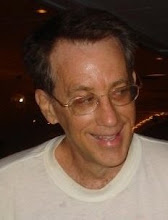Sports Illustrated's Chris Ballard owes me an apology and his readers a refund
I learned recently that Chris Ballard mentions me in his book The Art of a Beautiful Game: The thinking fan's tour of the NBA (see pages 88 and 89). It's the chapter on free throws, and the section dealing with Dwight Howard's ongoing problems at the line. Ballard gives me a fair shake at first, quoting from my analysis of the shooting style Howard was employing at the 2008 Olympics and the early months of the 2008-09 NBA season:
Dennis Hans, a self-styled shooting guru and freelance writer, wrote on his blog that the problem was "a premature unhinging of the flexed wrist of the shooting hand" and compared Howard's motion to the way golfers get in a bad habit of "hitting from the top."
Granted, it would have been helpful to his readers if Ballard had quoted more from my analysis, either the blog post or the longer piece for HoopsHype. That way, his readers would understand why it's bad for golfers to "hit from the top" and for Howard to have that long, slow, back-and-forth, premature-unhinging motion (both as a free-throw shooter and jumpshooter).
Even Howard eventually figured out that it wasn't working and likely never would, as he drastically changed his shooting style in the summer of 2009 (after Ballard's book went to press), rendering idiotic the statements by assistant coach Patrick Ewing ("It's just repetition, repetition, repetition — and believing in it") and former Magic player Nick Anderson (who told Howard, as paraphrased by Ballard, "there was nothing wrong with his mechanics, that it was mental"). Whether Ballard sees himself as the "thinking fan" in his book's subtitle or the thinking fan's "guide," the implication is he's capable of independent thought. So why couldn't he discern that Ewing and Anderson are clueless, and that the only reason to quote them at length would be to make fun of them?
(I dissected Howard's new-but-unimproved 2009-10 stroke here.)
But what really irritates me is what Ballard writes immediately after the "hitting from the top" quote:
In case we didn't get the point, Hans also called Howard's form "a sickly shooting motion," "lousy" and a "monstrosity."
Ballard gives the reader the impression that I ran out of serious things to say and, rather than simply end my analysis, took some parting pot-shots. But if you read the section of my essay from which Ballard plucked his mini-quotes, you'll see that such is not the case, and that the monster metaphor ("monstrosity") explains how various Orlando Magic assistant coaches over several seasons transformed an 18-year-old with a fairly sound and simple stroke into a young man of 23 or 24 who not only was lost at the line, but was failing with a convoluted contraption of a stroke that was not his own: it had been pieced together — with Howard's gullible, authority-worshipping ascent — Dr. Frankenstein-style. Here's what I wrote:
Howard, on the other hand, begins a long, slow and gradual unhinging of his shooting wrist right from the start of the “forth” segment. There’s no snap at the end because there’s nothing left to snap: you can’t snap and already-unhinged wrist. This prevents him from extending on his shot and is the cause of the lame-looking bent-arm finish.
This sickly shooting motion, which he’s constantly ingraining with his daily sessions practicing free throws, is a double whammy. It hasn’t worked at the line, and it shows no sign of working from the field. His inability to even attempt short- and mid-range jumpshots when the flow of the game presents such opportunities seriously impedes his offensive development.
What Howard thinks is a fundamentally sound stroke is actually a fundamentally unsound non-stroke. He has a long, lousy, slow-motion follow through where his stroke should be. How a rookie with a nice-looking shot ended up four years later with this monstrosity is a long story. (I told some of it here this past spring.)
I use the word “monstrosity” not to be cruel but for how Howard’s shot has been assembled. It’s been pieced together over time by various assistant coaches in the manner that Dr. Frankenstein constructed his monster. In both cases, the parts don’t add up to a smoothly functioning whole. It’s not what he had as a rookie, nor what some of his tall teammates have today.
I may have more to say on other glaring flaws in Ballard's free-throw chapter. It's not surprising that he would consider Dan Barto's gobbledygook junk-science analysis of Howard worthy of inclusion. Barto, a young, gung-ho, well-meaning sort who is way too technical for his own good, helped turn Andrei Kirilenko into one of the most confused and dreadful jumpshooters in NBA history in 2006-07. Also, Ballard's discussion of Shaq at the stripe suggests the author slept through the first seven seasons of the 21st century's initial decade.

